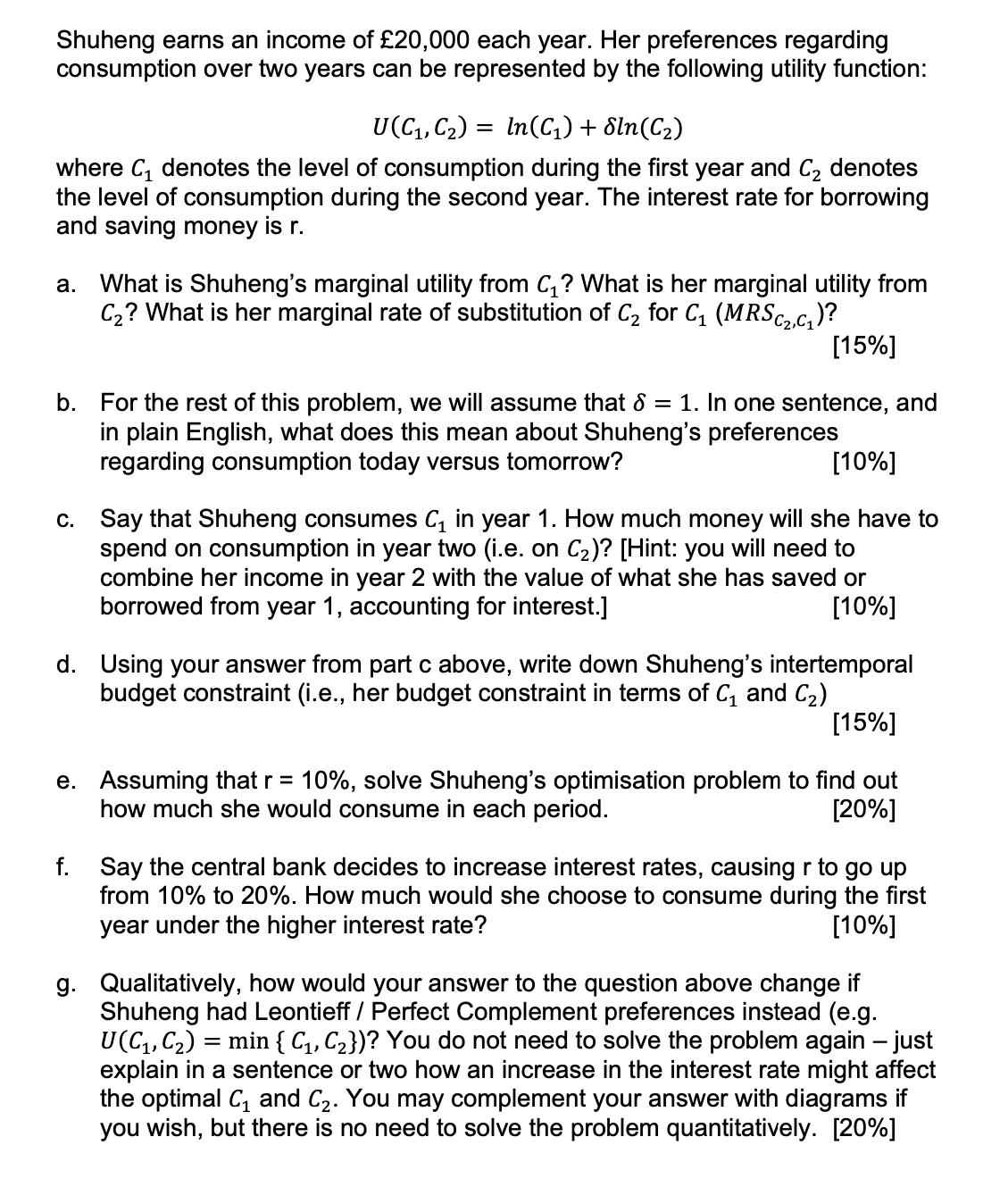Answered step by step
Verified Expert Solution
Question
1 Approved Answer
Shuheng earns an income of 20,000 each year. Her preferences regarding consumption over two years can be represented by the following utility function: U(C,

Shuheng earns an income of 20,000 each year. Her preferences regarding consumption over two years can be represented by the following utility function: U(C, C) In (C) + dln(C) where C denotes the level of consumption during the first year and C denotes the level of consumption during the second year. The interest rate for borrowing and saving money is r. = a. What is Shuheng's marginal utility from C? What is her marginal utility from C? What is her marginal rate of substitution of C for C (MRSC,C)? [15%] b. For the rest of this problem, we will assume that 8 = 1. In one sentence, and in plain English, what does this mean about Shuheng's preferences regarding consumption today versus tomorrow? [10%] c. Say that Shuheng consumes C in year 1. How much money will she have to spend on consumption in year two (i.e. on C)? [Hint: you will need to combine her income in year 2 with the value of what she has saved or borrowed from year 1, accounting for interest.] [10%] d. Using your answer from part c above, write down Shuheng's intertemporal budget constraint (i.e., her budget constraint in terms of C and C) [15%] e. Assuming that r = 10%, solve Shuheng's optimisation problem to find out how much she would consume in each period. [20%] f. Say the central bank decides to increase interest rates, causing r to go up from 10% to 20%. How much would she choose to consume during the first year under the higher interest rate? [10%] g. Qualitatively, how would your answer to the question above change if Shuheng had Leontieff / Perfect Complement preferences instead (e.g. U(C, C) = min { C, C})? You do not need to solve the problem again - just explain in a sentence or two how an increase in the interest rate might affect the optimal C and C. You may complement your answer with diagrams if you wish, but there is no need to solve the problem quantitatively. [20%]
Step by Step Solution
★★★★★
3.37 Rating (147 Votes )
There are 3 Steps involved in it
Step: 1
a To find Shuhengs marginal utility from C we need to take the derivative of her utility function with respect to C UC C UC 1C Similarly her marginal ...
Get Instant Access to Expert-Tailored Solutions
See step-by-step solutions with expert insights and AI powered tools for academic success
Step: 2

Step: 3

Ace Your Homework with AI
Get the answers you need in no time with our AI-driven, step-by-step assistance
Get Started


